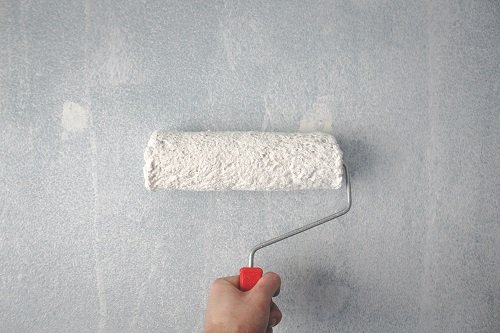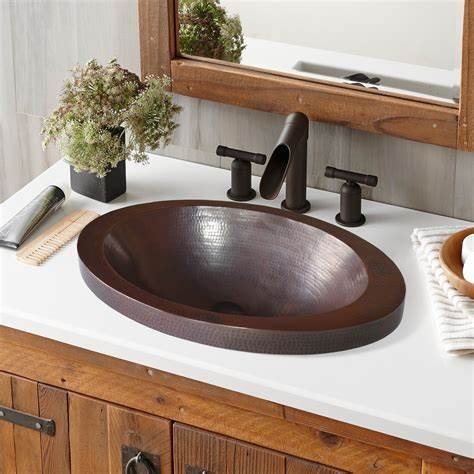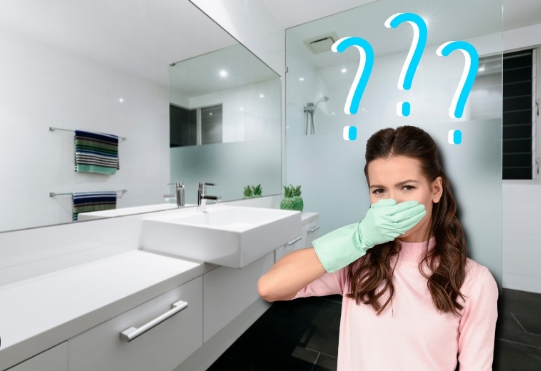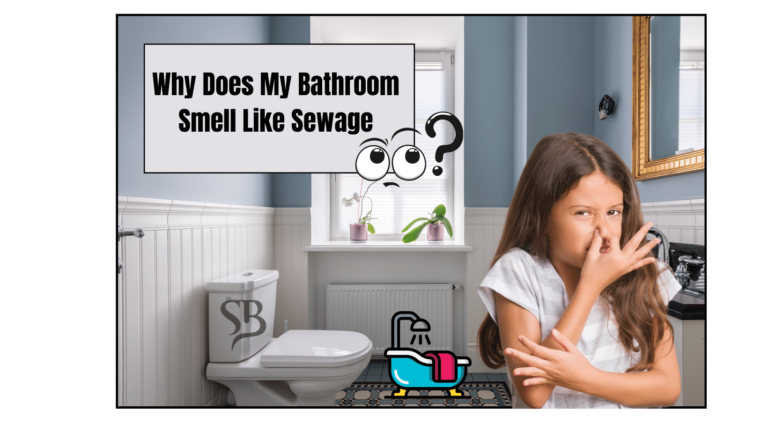When your bathroom sink smells like sewer gases or rotten eggs, it can be unpleasant and alarming. A sewer gas smell coming from the drain likely indicates a problem in your plumbing that allows built-up gasses to come back up from the pipes.
Identifying and resolving the underlying cause is important to prevent unpleasant odors as well as more serious problems. This article explores the common reasons a bathroom sink drain may smell and how to diagnose and fix a stinky sink drain.
What Causes Sewer Smells From a Bathroom Sink
The Buildup of Organic Debris

One of the most common triggers of sewer odors from bathroom drains is a buildup of hair, soap residue, and other gunk accumulating in the pipes. As debris collects over time, it sticks to the sides of the pipes.
The layer of film provides a place for smelly sewer gases like hydrogen sulfide to cling and grow slime. So when water runs through the drain, it dislodges some of these gases, pushing them up through the pipes and out the drain.
Stopping up this buildup and clearing the pipes is key to stopping sewer smells.
Clogged Vents
Many plumbing systems have vent pipes that release gases from sewer lines and allow air to flow so water can drain properly.
If the roof vent pipe connected to your sink drain gets clogged with debris, gases can get trapped in the system and travel up through the sink pipe instead of escaping the vent.
Clearing debris from the vent openings can help prevent this “back-drafting” of sewer gases. Proper venting is critical for draining and odor prevention.
Also read: Mushroom Growing in Sink Drains: How to Fix the Problem
Dried Out P-Traps

The U-shaped pipe underneath sinks is called a P-trap, and it holds water to create a seal, preventing gases in drain pipes from entering the home.
But if a sink isn’t used often, this water can evaporate. The lack of a water seal allows gases to travel up the pipes into the sink.
Simply running water down the drain for a minute can reestablish the protective water barrier.
You might also like: Reverse P-Trap – Can A P-Trap Go Both Ways
Pipe or Seal Leaks
Cracks, loose fittings, and leaks in sink drain pipes and connections can also allow gases to leak into places they don’t belong. Tightening connections, replacing worn washers and gaskets, or patching leaks can resolve this issue.
Carefully inspect below the sink for water damage or subtle dripping that indicates a leak. Running a small amount of vegetable oil and then hot water down the drain can help detect very small drain leaks.
How To Diagnose and Fix a Sewer Smell In The Bathroom Sink
Confirm the Source
Before trying to fix a potential sink drain problem, smell around first to confirm the sink is definitively the source of the odor. Sometimes, a stinky drain trap dried out overnight can release smelly sewer gases when water first runs in the morning.
But if there’s still a very strong or persistent rotten egg or sewage smell coming directly from the drain itself, there’s likely an underlying issue that needs to be addressed.
You might also like: Why Does Your Bathroom Smell Like Paint Thinner
Plunge the Drain

A simple first step is using a sink plunger to vigorously plunge the drain while running hot water to dislodge any built-up gunk. Cover the overflow hole fully with a wet rag when plunging to make sure gases forced up don’t escape that opening.
Run plenty of hot water while plunging. Let hot water run 5 minutes afterward to flush open pipes. A full kettle of boiling water poured slowly down the drain can also help melt and wash away sediments.
Also read: How to Hide a Plunger and Toilet Brush with Style
Use a Chemical Cleaner
For more thorough cleaning, pour an enzyme or acidic drain cleaner/digestant down the drain following label instructions. These break up organic matter, grease, and biofilm. Cover the drain for a few minutes while the cleaner sits.
Then, flush with plenty of hot water for a few minutes to wash debris away. Avoid using caustic alkaline drain cleaners if possible, as they can damage pipes for a long time.
Also read: Homemade Bathroom Cleaner Using Vinegar, Dawn, Baking Soda
Manually Clean the P-Trap
If cleaning efforts don’t fully eliminate odors, the sink’s P-trap likely needs to be manually cleaned. Place a bucket under the trap to catch water when disassembling.
Unscrew both ends of the curved pipe and pull it down, clearing room below the sink to access it. Rinse out any debris trapped inside the bucket, scrubbing away visible gunk on the pipe walls. Use a pipe brush to clean the full length of the curved section.
Also, inspect the horizontal arm leading from the sink strainer to the P-trap and scrub any visible residue. Reconnect the P-trap pieces and tighten all joints, double-checking alignment. Run water and check for leaks.
Also read: How To Remove a Bathroom Sink Stopper
Use a Plumbing Snake

For deeper blockages causing sewer gas backups, use an auger or plumbing snake to reach deep into the drain line.
Feed several feet of the stiff coiled wire down the pipes while cranking the handle to unclog embedded blockages of hair, grease, and soap scum.
Once clear, finish by flushing with hot water for a few minutes to wash away any loosened gunk.
Clear Clogged Vents
If sink vent pipes are likely the culprit, try spraying water through roof vent openings while someone runs hot water to confirm.
Vent pipes can get clogged with debris like leaves, bird nests, snow, and ice dams. Professional vent cleaning may be needed from both ground level and potentially on the roof.
The proper venting function is critical for draining and preventing gases.
Fix Leaks
Carefully tighten any leaky or loose slip joints below the sink. Replace cracked washers, expired plumber’s putty, or faulty fittings, letting gases escape.
Watch for moisture or green mineral deposits indicating small leaks at joints. Get all connections below the sink completely sealed so gases can’t enter living spaces.
Also read: Will Flex Seal Fix a Cracked Bathtub
Conclusion
A foul sewage or rotten egg smell coming from your bathroom sink drain can be alarming and offensive. But in most cases, it points to common fixable problems like buildup in pipes, dried-out P-traps, vent issues, or simple leaks.
Drain cleaning plunges, snakes, and chemicals can clear the immediate problem. But you also want to identify and fix the underlying issues like clogs, leaks, or improper venting so smells don’t keep recurring.
Distinguishing whether the odor source is limited to the sink or connected to a larger home sewer gas problem helps focus repair efforts in the most appropriate location.
Dealing quickly with any strange sewer or rotten egg smells from drains can restore bathroom comfort and prevent worsening unseen pipe deterioration and clogging issues.







